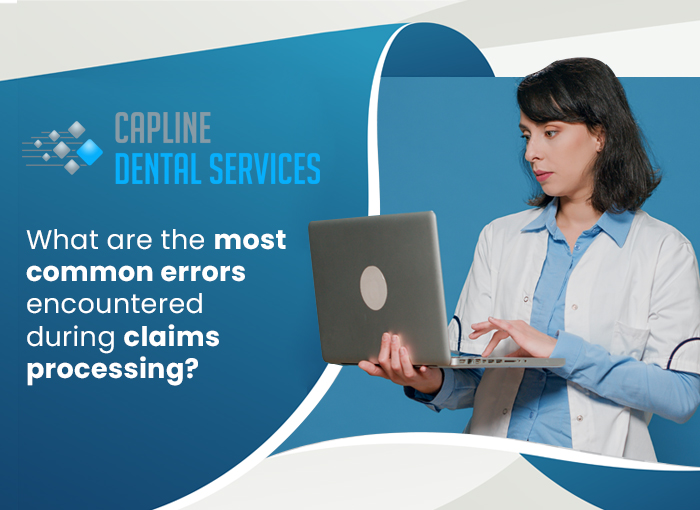
A large percentage of claim denial rates can considerably lower the revenue of a practice’s profitability. In 2016, nearly 9% of claims submitted in U.S. hospitals were originally denied.
Such mindboggling statistics have the greatest impact on smaller and independent healthcare practices as they do not have large budgets on which they generally operate.
There are a few ways by which practices can take care to prevent some regular dental claims errors.
Preventing claims denial in the first place
Many small or independent dental practices are susceptible to claims errors due to a lack of sharp eye and vigilance while filling such claims. Some of these practices prefer to handle the billing in-house to manage costs and avoid the services of outside parties in revenue cycle management (RCM).
The main motive for such steps is to exercise complete control over their billing operations. They also resort to in-house talent due to controlled budgets at their disposal. Thus, the filing of claims is thrust on receptionists or inexperienced staff which can lead to a rise in claims denials and consequently decrease the revenue.
Some common mistakes that need to be avoided
A few basic errors that must be avoided while also exercising caution can help improve the clearance of all claims and submissions.
Incomplete patient information:
Some common mistakes made at the time of dental billing are missing or incomplete information while submitting claims. Some such errors can include missing details like dates, the complete name of the patient, etc. All the mandated fields must be accurately verified prior to submitting the claim.
This is the key step to avoid claim denial once submitted. An updated patient information portal can make it much simpler to manage and fill in all the relevant data that is needed. This takes care of all the minute and relevant data such as the insurance policy number and whose name is the policy purchased. The relationship between the patient and the insured person also needs to be accurate.
Claims not submitted on time:
Submission of all claims within the time window is paramount and this is a very common error made by practices due to other priorities or pending workloads. The day a patient commences using the services of the practice is accorded as the starting date at the time of filling out the claim form.
All claims need to be filled and submitted within the stipulated time frame that is desired by the respective insurer. A lack of adherence can lead to possible claim denial. On-time submission of claims also avoids unnecessary delays in payments.
Issues related to coding:
The usage of an incorrect code or using some outdated coding by the coder or the biller is bound for a claim denial. There may be a case for upcoding if the diagnosis of the patient demands an upgrade owing to a far more critical condition. This then entails a costlier treatment for the patient.
Under-coding happens when a cheaper service is unavailable while the process of coding is on. Vital documents that are needed might be unavailable and this can lead to errors.
Cases of Duplicate Billing:
There can be lapses when a claim that is resubmitted is not removed from the accounting files of the respective patient. Through oversight, a patient can be billed twice for availing of any procedures or services.
The staff can at times not verify if the service availed has been paid for by the patient. Consequently, such duplicate billing then leads to claim denials.
Patient Eligibility:
Prior to any service or procedure being offered to a patient, verifying the patient's eligibility is a must. This will help confirm which services the patient will be covered through insurance.
Updating the data for insurance frequently is simple and helps to verify if the patient's plan covers the service offered.
Monitoring the policies and training the billing team is essential. It is critical attaining a prior certification before submitting the claim. Outsourcing the entire process can be more helpful for practices seeking growth.
As can be gathered from above, basic human errors in billing can trigger unnecessary claim denials. Monitoring all submitted claims can detect the cause of denial and address the issue.